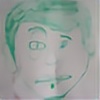HOME | DD
 Gautama-Siddharta — The Big Universe out there
Gautama-Siddharta — The Big Universe out there

Published: 2012-12-03 17:20:19 +0000 UTC; Views: 3446; Favourites: 163; Downloads: 0
Redirect to original
Description
The Milky Way - our own galaxy on the sky from south to north.The lowest part that you see in the picture is the center of the galaxy. Unfortunately from the northern hemisphere it doesn't go high above the horizon.
The light you see at the top left is the city lights from the capital Skopje, located some 30 km to the north from the place where the photo was taken
4 images of 2 min. stacked. 10mm lens at f-4, ISO 1600 with tracking
Location: Rudine, Macedonia 11.10.2012
Previous try :thumb331982209: [link] little bit different
Related content
Comments: 30

Hello,
This was featured in ArtistleFeatures Vol. V at #Artistle
Thank you for sharing your wonderful work
👍: 0 ⏩: 0

Hello
You have been featured in #SkyAndNatureClub 's Best of December 2012 -Feature!
Please consider giving a 
Have a nice day
👍: 0 ⏩: 0

Thanks a lot 
👍: 0 ⏩: 0

Thanks a lot
👍: 0 ⏩: 0

it is a great one ! i actually cannot stop looking at it . i'm wondering wheter you were able to see it , even weakly with naked eye ?
👍: 0 ⏩: 1

You can't see color on the sky unfortunately. Our eyes don't function like cameras 
👍: 0 ⏩: 1

ok that's what i thougt . so how you exactly knew that it was there specifically ? multiple attempts ?
👍: 0 ⏩: 1

Astronomy is my hobby so I know where is the Milky Way. And you can see it on the sky, just have to out of big city lights and it is there, not in colors like this but in some grayish gradient.
Anyway to be able to capture it like this you have to be well outside of a city in some dark countryside. That means at least 30 km away from any big city
👍: 0 ⏩: 0

This is so cool, do you have to have a certain kind of camera to do this? I have a bridge camera that i can set the aperture and all that but I cant put different lenses on it, can that work?
👍: 0 ⏩: 1

Thanks a lot.
Regarding what you need: of course the best is to have a DSLR as you have much more options regarding setup, lenses etc.
Regarding your camera, you need to use high ISO value (1600, 3200) don't know what you have, although the noise will be substantial. And the most important is the exposure. Don't know if you can make long exposures as here 2 min.
If you are able to control the exposure more than 15 or 30 sec than you will be able to make it, just to go on some really dark place.
👍: 0 ⏩: 3

I tried this once, using the maximum exposure my camera managed (which was about 30-35 seconds) and all I got was tiny little white lines. I wonder: is it possible that the stars moved so much within 30 seconds, so as to draw those tiny lines on the sky/photo? Or what was I doing wrong? In your photo the stars look like dots, not like lines. What is the secret? Thanks in advance for telling me!
👍: 0 ⏩: 1

They move on every lens if you don't have tracking mount. This is tracking that is used for the telescopes that are set to track the movement of the sky. That is how in my picture the stars are dots. I putted the camera on a tracking mount and made the photos.
Additionally the lines depend on the focal length of the lens, more wider they will be smaller, more zoom lens they will be bigger
👍: 0 ⏩: 1

I see. I never knew that such a tracking mount was needed - and now that I've looked it up, I guess star photography will always remain a dream only. A tracking mount is way too expensive. But thanks for the info anyway.
👍: 0 ⏩: 0

Ill have to look at mine to see but thank you, this gives me a good place to start
👍: 0 ⏩: 1

can u tell me how u can do this shot ? when i try to shot the stars or the moon i don't see anything only the black .Nice job
👍: 0 ⏩: 1

The camera for this was placed on a tracking mount that tracks the sky, in order the stars not to move.
Anyway if you have a DSLR camera you can make it, all you need is a tripod. The stars wont be like this, maybe small lines depending on the exposure.
The best setting is: high ISO from 800 till 3200 (depending on camera and noise ratio)
wide angle lens as fast as possible to be able to have shorter exposures.
And of course the exposures will be from 30 sec up to 2-3 min again depending on camera, lens and ISO values.
👍: 0 ⏩: 1




























